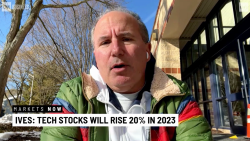If a popular piece of retirement legislation makes it to President Biden’s desk this year, it would give older 401(k) participants the opportunity to contribute more to their nest egg and possibly bolster their tax-free savings.
Currently, anyone 50 or older may contribute an additional $6,500 on top of the annual $20,500 federal 401(k) contribution limit, for a total of $27,000 a year.
But under the Secure Act 2.0, which the House passed in March, the cap on catch-up contributions would increase to $10,000 for people ages 62, 63 and 64. So they’d be allowed to save a total of $30,500 in their 401(k)s.
A similar bill under consideration in the Senate would allow the catch-up contribution limit to increase to $10,000 for anyone 60 and older.
But there’s another element in the House bill that would affect anyone who decides to make catch-up contributions from age 50 and up. The legislation would “Rothify” them. So instead of putting your catch-up contribution into a traditional 401(k) account and getting a tax deduction for it, it would be deposited into a Roth 401(k) account and you would have to pay income tax on your contribution the year you make it. In exchange, that money you invest would grow tax-free, and any distributions you take from that Roth account in retirement would also be tax free income to you.
The Senate proposals currently under consideration don’t include the Rothification element, which also helps lower the near-term cost of the bill because the government will be collecting revenue on the contribution upfront, rather than when a person retires and takes a taxable distribution from their traditional 401(k).
But the Senate is still far from finalizing its bill, after which it will then have to negotiate with the House over the differences between its legislation and the House’s Secure Act 2.0.
Who the expanded catch-up contribution would help
Several provisions in the House bill and companion proposal in the Senate would help retirement savers of all ages and income levels.
But the expanded catch-up provision isn’t one of them. It likely would benefit only “a rarefied group of people,” said David John, a senior strategic policy advisor at the AARP Public Policy Institute.
Here’s why: For starters, it will only help those who already max out their 401(k)s, which is just a small minority of participants. And those are disproportionately high-income earners.
And specifically among those 50 and older, only 15% took advantage of the catch-up contribution option in 2020, according to Vanguard, which analyzed data from the 4.7 million participants in the defined contribution plans for which it is the record keeper.
Those in that 15% “tended to have higher incomes and have accumulated substantially higher account balances,” Vanguard said.
But that doesn’t mean all those with higher incomes and higher balances make catch-up contributions. Vanguard also found among those with incomes over $150,000, only 60% did. And among workers with account balances of more than $250,000, only 36% did.
“Some of those who are well off have accumulated next to nothing,” said Craig Copeland, director of wealth benefits research at the Employee Benefit Research Institute.
In a broader survey of 401(k) plans, the Plan Sponsor Council of America found that even though more than half of employers (55.4%) offered to match catch-up contributions, less than a third of eligible plan participants (29%) opted to make them.
Why you should make catch-up contributions
Even if the retirement legislation under consideration does not become law, there are good reasons to consider making catch-up contributions if you can.
“You want to have as high a savings balance as you can when you reach retirement for two reasons: income and emergencies,” John said.
Saving those catch-up contributions in the Roth portion of your 401(k) as well can be beneficial if you think you will be in the same or higher tax bracket in retirement, John said.
Plus, you’ll get the added advantage of having more tax-free income to draw down when you do retire, whereas you’ll have to take out more from your traditional 401(k) to net the income you’ll need every year because of the tax bite.



























